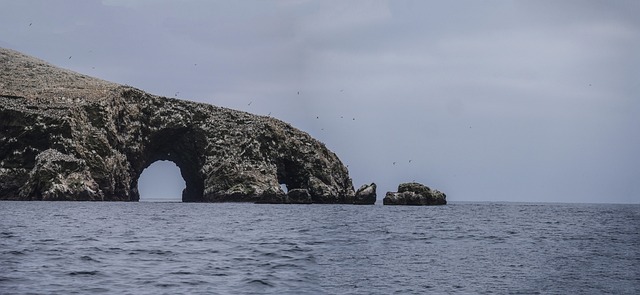So, you’re interested in the amazing discovery of Seven Thousand Year Old Mummies discovered in the Sahara Desert? It’s pretty incredible, isn’t it? These aren’t your typical Egyptian pharaohs; we’re talking about a whole different chapter in human history. The recent findings about the Takarkori people are rewriting what we thought we knew about the region, especially regarding human migration and adaptation to the changing environment. These 7000-year-old mummies discovered are providing a fascinating glimpse into the past, challenging existing theories and opening up exciting new avenues for research.
Table of Contents
Furthermore, the analysis of these Thousand Year Old Mummies discovered is revealing some truly surprising details. Their genetic makeup, for example, doesn’t quite fit the expected narrative, showing a closer connection to North African populations than previously believed. Therefore, this discovery really underscores the complexity of human history. It’s a reminder that our ancestors were far more diverse and adaptable than we might have imagined.
We also Published
In the annals of archaeological discovery, few findings resonate with the profound intrigue of ancient mummies unearthed from the heart of the Sahara Desert. Recent revelations concerning 7,000-year-old remains have not only rewritten the narrative of the region’s past but have also unveiled a captivating tale of a people, the Takarkori, whose genetic heritage defied expectations. This remarkable discovery, a testament to the enduring power of scientific inquiry, offers a fresh perspective on the complex tapestry of human migration, adaptation, and the enduring legacy of the Green Sahara era. The study of these ancient mummies has illuminated a previously unknown chapter in the history of North Africa, revealing a genetic lineage that challenges established theories and underscores the intricate interplay of environmental change and human evolution.
Unveiling the Secrets of the Takarkori: A Journey into Ancient Lineages
The Sahara Desert, often perceived as a barren expanse, once flourished as a verdant savannah during the African Humid Period, a time when life teemed in what is now one of the world’s most arid regions. The Takarkori people, female herders from this era, inhabited the region, leaving behind traces of their existence in the form of remarkably preserved mummies. DNA analysis of these ancient remains has revealed a surprising genetic profile, diverging from the expected Sub-Saharan origins. Instead, the Takarkori exhibited a closer relationship to other North African populations, a revelation that has sent ripples through the scientific community. This unexpected connection underscores the complexity of human migration patterns and the enduring influence of environmental factors on genetic diversity. The Takarkori’s genetic makeup provides a unique window into the past, challenging conventional wisdom and offering new avenues for understanding the origins and evolution of human populations in North Africa.

The meticulous work of researchers, led by archaeogeneticist Nada Salem, in analyzing the genes of these naturally preserved mummies, has provided invaluable insights into the Takarkori’s ancestry. Despite the harsh conditions of the desert, enough DNA was recovered to reconstruct their genetic history. The study, published in Nature, revealed that the Takarkori’s ancestry primarily stemmed from a previously unknown North African genetic lineage, a lineage that diverged from Sub-Saharan African lineages around the same time as the emergence of present-day humans outside Africa. This finding challenges the assumption of a monolithic Sub-Saharan origin for all populations in the region and highlights the intricate interplay of genetic exchange and isolation. The Takarkori’s genetic profile suggests a more complex and nuanced picture of human history in North Africa, where diverse populations interacted and evolved in response to environmental changes and cultural influences. This discovery opens new doors for further research, promising to deepen our understanding of the human story.
The Genetic Tapestry of the Green Sahara: Weaving Together Ancestral Threads
The Takarkori’s genetic connections extend beyond their immediate North African relatives, revealing intriguing links to other ancient populations. They share a close genetic relationship with 15,000-year-old foragers from Taforalt Cave in Morocco, suggesting a shared ancestry and a common genetic heritage. This connection underscores the interconnectedness of human populations across North Africa during the ancient past. The Taforalt people, like the Takarkori, also possess Neanderthal genes, albeit in varying degrees, further complicating the genetic landscape of the region. The Takarkori, while having less Neanderthal DNA than the Taforalt, still possess more than other Sub-Saharan groups from that period. This suggests a complex history of interaction and genetic exchange between different human populations, including Neanderthals, during the early stages of human evolution. The Takarkori’s genetic profile thus provides a unique lens through which to examine the impact of Neanderthal admixture on the genetic makeup of early human populations in North Africa.
The study of the Takarkori also sheds light on the spread of cultural practices, such as pastoralism, in the Green Sahara. The evidence suggests that pastoralism spread through cultural diffusion rather than large-scale migrations. The Takarkori, though hunter-gatherers, were skilled in crafting pottery, baskets, and tools, and they exhibited a tendency to stay in one place for extended periods. This suggests a sedentary lifestyle that may have facilitated the adoption of new technologies and cultural practices. The isolation of the Takarkori, likely due to the diverse environments of the Green Sahara, may have contributed to the preservation of their unique genetic profile and cultural practices. This isolation, however, did not prevent them from interacting with other populations, as evidenced by traces of admixture with farmers from the Levant. The Takarkori’s story is a testament to the resilience and adaptability of human populations in the face of environmental challenges, and their legacy continues to resonate in the genetic and cultural diversity of North Africa today. Their existence challenges us to rethink our understanding of the past and to appreciate the intricate connections that bind us to our ancestors.
Deciphering the Takarkori’s Legacy: Implications for Human History
The discovery of the Takarkori mummies has profound implications for our understanding of human history, particularly in the context of North Africa and the broader African continent. Their unique genetic profile challenges established theories about the origins and migration patterns of human populations, suggesting a more complex and nuanced picture of human evolution. The Takarkori’s close relationship to North African populations and their distinct genetic divergence from Sub-Saharan groups highlight the importance of considering regional variations and the impact of environmental factors on human genetic diversity. Their story underscores the need for a more inclusive and comprehensive approach to studying human history, one that takes into account the contributions of all populations and the intricate interplay of genetic exchange and isolation. The Takarkori’s legacy serves as a reminder of the interconnectedness of human populations and the enduring power of scientific inquiry to unravel the mysteries of the past.

The Takarkori’s story also provides valuable insights into the spread of cultural practices, such as pastoralism, in the Green Sahara. Their hunter-gatherer lifestyle and their skills in crafting pottery, baskets, and tools suggest a level of cultural sophistication that may have facilitated the adoption of new technologies and cultural practices. The study of the Takarkori’s genetic and cultural heritage can help us understand the processes by which human populations adapted to changing environments and adopted new ways of life. The Takarkori’s legacy also underscores the importance of preserving and protecting archaeological sites and cultural artifacts, as they hold invaluable information about the past and can help us understand the complex tapestry of human history. Their story is a call to action, urging us to embrace diversity, celebrate our shared heritage, and continue to explore the mysteries of the human experience. The Takarkori’s story will continue to inspire researchers and the public alike, as we continue to learn more about our shared past.
We also Published
RESOURCES
- 7,000-year-old mummy found in Chile – Archaeology Wiki
- Scientists Discovered Ancient Mummies in the Desert That …
- Ancient DNA sheds light on origins of Saharan …
- This DNA has revealed a ‘ghost’ branch of …
- Unknown human lineage lived in ‘Green Sahara’ 7,000 years ago …
- Chinchorro Mummies are the World’s Oldest …
- 7,000-year-old sculpture resembling an alien creature discovered
- Chile: Students Discover Chinchorro Mummy | TIME
- 7,000-Year-Old Native American ‘Bog Burial’ Found Off the Coast of …
- Chilean School Children Uncover 7,000-Year-Old Mummy






0 Comments